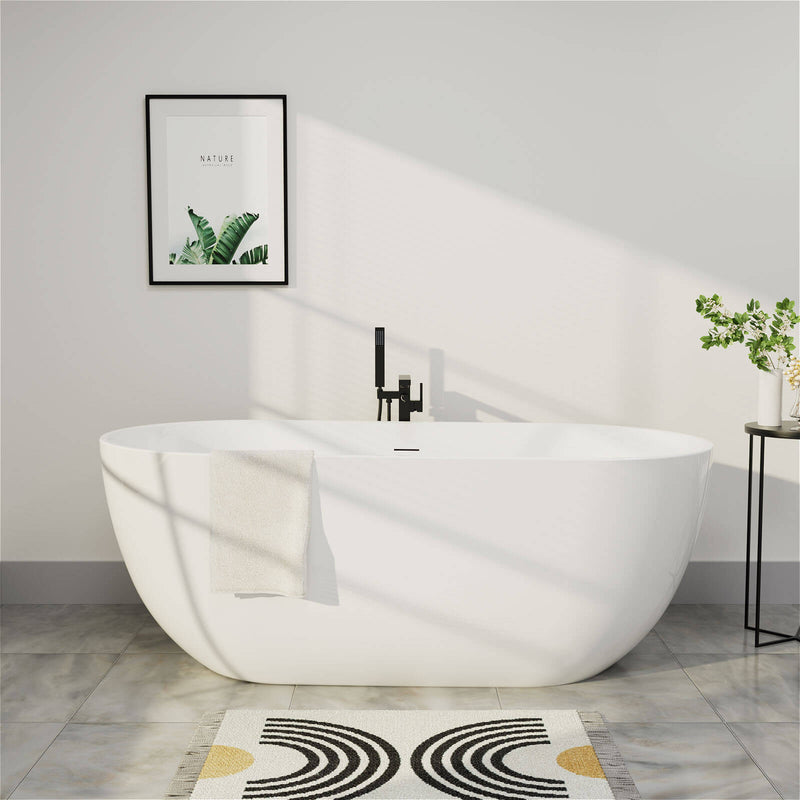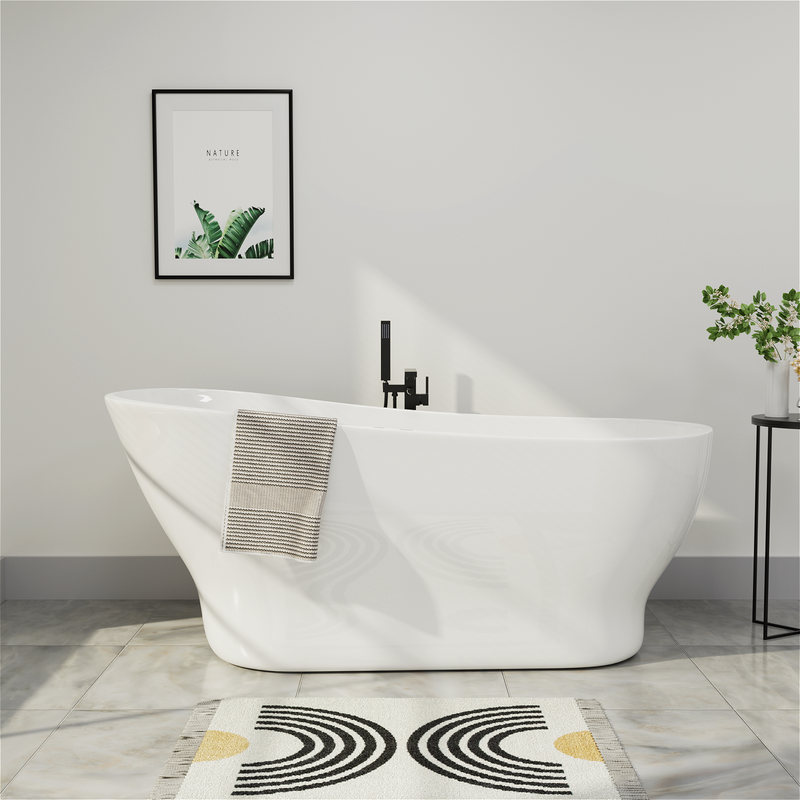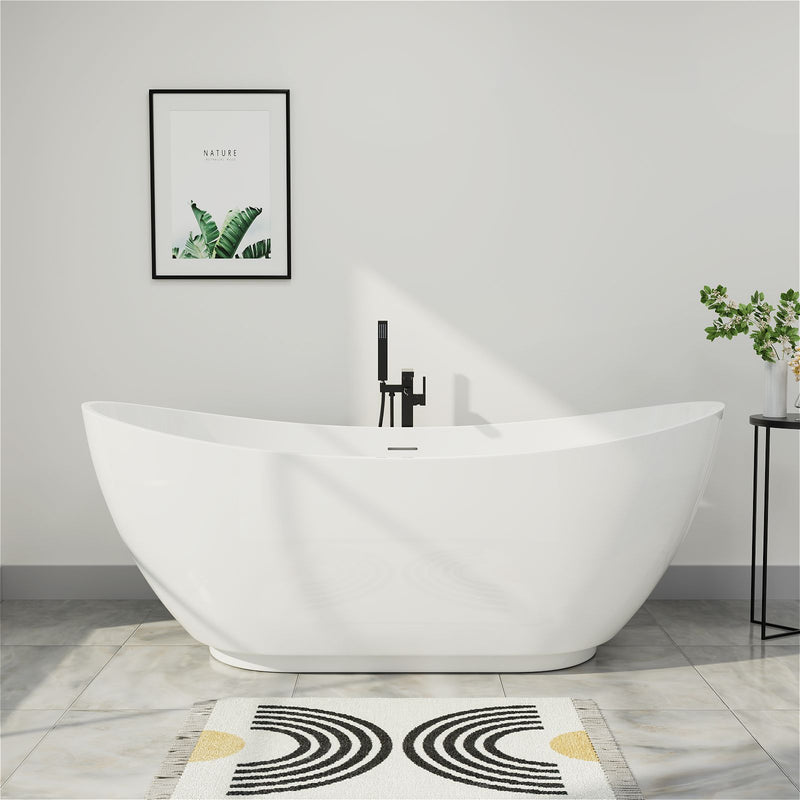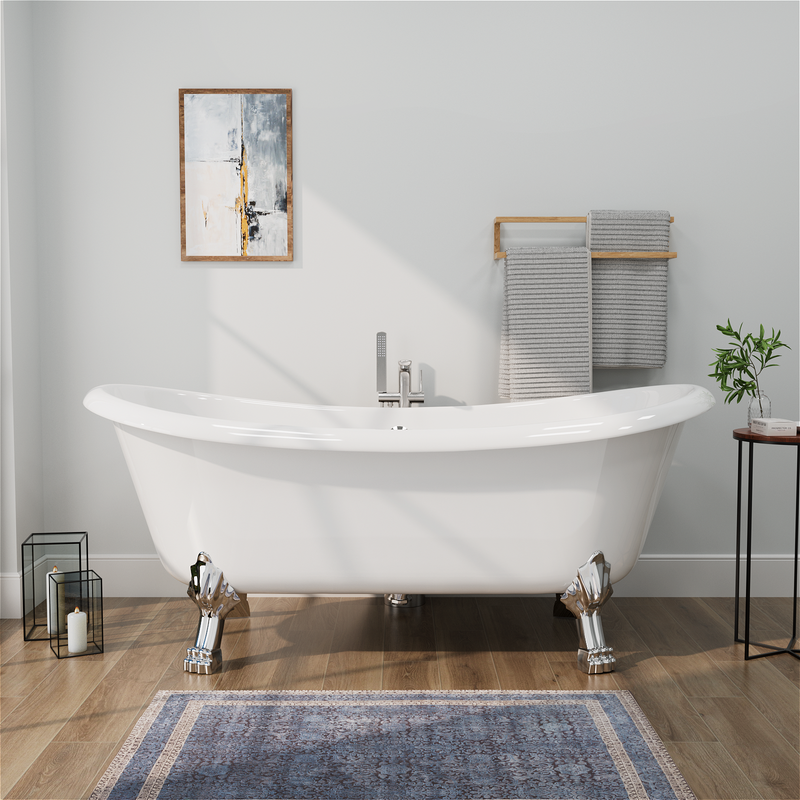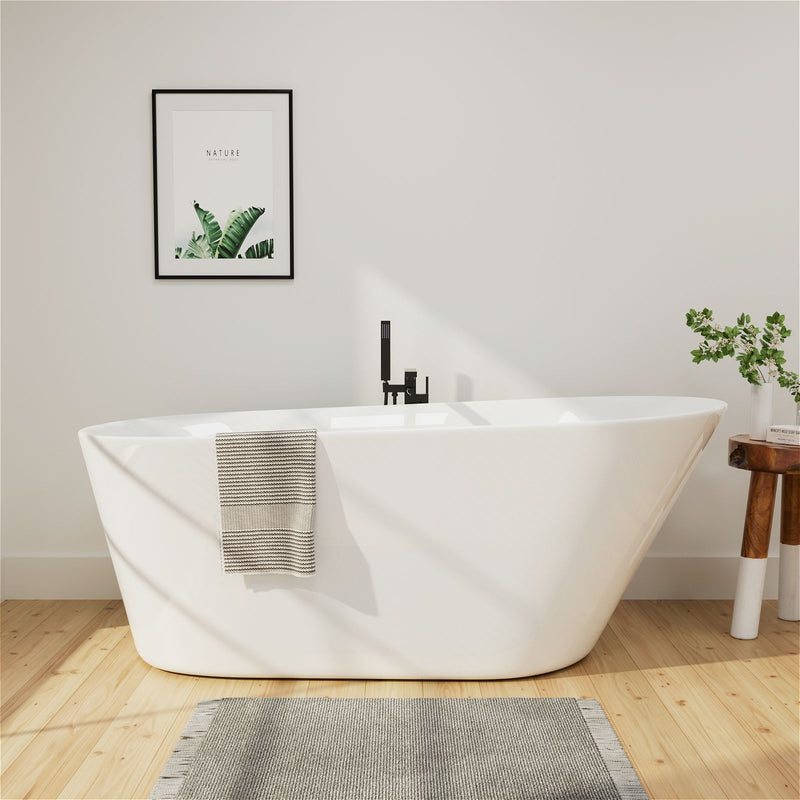The bathroom is one of the most important rooms in the home, and the bathtub is often the centerpiece. Familiarizing yourself with the various parts of a bathtub can help you avoid headaches and get the job done smoothly when upgrading or repairing your bathroom. All bathtub parts are designed to improve functionality and comfort. Whether you are planning to replace your bathtub, want to fix a leak, or are just interested, you can learn about the key bathtub parts.
Knowing the purpose of these key bathtub parts can help ensure the correct installation and use of the bathtub. Here is a brief introduction to the bathtub parts.
Bathtub
The bathtub itself is the main basin for bathing. Bathtubs come in a variety of materials, such as acrylic, cast iron, ceramic, etc. Bathtubs also come in many different shapes, such as rectangular, oval, or angular. The size and depth of the bathtub will affect the bathing capacity and experience.

Shower
One of the systems that is directly connected to the water tank is the shower system. Shower systems provide aerial bathing, which means that instead of sitting and soaking in the bathtub, you can bathe while standing. Shower systems are also connected to the hot water system, allowing you to adjust the water supply status according to the environment (cold water environment corresponds to hot water and vice versa). For a bathtub, the shower system is connected with the bathtub as the drain and the shower system as the aerial water supply. The advantage of the shower system is that you can customize it to your needs. If you want a better water flow, you can change to a larger shower head and vice versa. But the disadvantage is that the water bill may be higher. Last but not least, you can adjust the water temperature with the help of a thermostat. A thermostat is a device that helps you regulate the temperature of your bath, which helps avoid unnecessary accidents (such as skin burns) when bathing.
Water Supply
The water supply system supplies water to your faucets and shower head peripherals, thereby filling your bathtub with water so that you can bathe. It is crucial to maintain your water supply system regularly. Check for contaminants, dirt, and debris. These substances can not only cause harm to your body, but also damage the entire plumbing system. The water supply system is used for cold water, but hot water requires a subsystem (water heater). Instead of flowing directly into the faucet, the water is collected in the water heater, heated, and then flows out through the faucet. Therefore, it is equally important to properly maintain the water heater.
In addition, insufficient cold water in the shower is related to the shower tank, and similarly, insufficient hot water is caused by problems with the water heater. If you live in an apartment building, it is usually controlled on a per-unit basis. On the other hand, if you live in a single-family home, the water supply is buried underground or placed in a basement or crawl space so that it does not cause any disturbance to you.
One of the easiest ways to check the water quality is to watch the water flow out of the faucet and take a sniff. If the water smells foul or has rust, the tank and pipes need to be cleaned to provide better quality water to your tub. Regular checks (every two months) are recommended to keep the water supply in good condition.
Tip: After cleaning the tank, use chlorine. Chlorine helps maintain the water quality, kills any bacteria in the water, and also removes odors from the water.
Water Supply Pipes
The water supply pipes carry water from your home's main water supply pipe to the water supply of your tub, so that you can control the temperature and flow of water into the tub. Each tub has two water supply pipes:
- The cold water supply pipe provides cold water
- The hot water supply pipe provides hot water
These water supply lines are connected to a splitter pipe that allows both lines to flow out of the same outlet. A cartridge valve connected to the hot water line controls the temperature.
Faucet
The faucet is one of the most important parts of the bathtub. It is usually installed behind the wall above the bathtub spout and usually has four water supply lines. It has hot and cold water inlets. The bathtub spout has one outlet extending downward from the faucet and another outlet extending upward to the shower head. The hot and cold water are mixed in the bathtub faucet behind the wall to provide warm water to the bathtub spout or shower head. The controller extends outside the wall so that the bather can choose the right water temperature.
It not only provides the water needed for bathing, but also adjusts the water temperature. In addition, the faucet can also be used to add soap or other bathing products. Therefore, it is important to have a faucet that is in good working condition and made of durable materials.
When choosing a faucet, choose brass or other metal materials that will not fade easily. Also, make sure the surface is scratch-resistant and the handle is easy to hold. Also, consider buying a faucet with a detachable hose for easy cleaning. It is recommended to have a spare faucet ready for emergency use.

Drain
The drain is the pipe that allows water to flow out of the bathtub or sink, specifically through the drain pipe. It is a round hole located at the bottom of the tub or sink. If the water does not flow straight out, the drain is clogged (a common problem) and you need to check the drain for immediate problems. Typically, the clog is usually caused by a buildup of hair, which can clog the pipe and restrict water flow - installing a strainer to filter the hair can avoid problems later.
The right drain depends on the type of tub you have. When choosing a tub drain, you need to consider the following factors:
- Pipe assembly materials
- Actuator type
- Drain position measurement
- Drain plug type
- Bathtub spout
The water has to get into the tub somehow, and that's what the tub spout does. After the water is mixed by the tub faucet, it flows into the spout.
Most bathtub spouts come with a lever or other control called a shower diverter. As the name suggests, the diverter stops the water from flowing through the bathtub spray head and directs it to the shower head.
Valve
Control valve: A control valve is a valve that is responsible for controlling the water supply from the tank to your home. Generally, every home has two types of control valves: fixed valves and main valves. It is important to have both types of valves installed in your home because the main valve is responsible for supplying water to the entire house, while the fixed valve is connected to the water supply pipe that runs throughout the house. Regular maintenance of the valves can help you ensure that your family gets the amount of water it needs and that there are no blockages.
Distribution valve: A distribution valve is a valve used to divert the flow of water. In other words, if you want to concentrate the flow of water (hot and cold water in one place), then a distribution valve is essential. Almost all bathroom equipment in homes (such as shower systems and free-standing bathtubs) are equipped with distribution valves, which can change the water flow state with just a slight turn. So, how can you tell if the valve is faulty? The easiest way is to measure the amount of water coming out. If the water output is low or the pressure is low, you need to check if there is a problem with the valve.
Flexible Connector
Flexible connectors are pipes that can solve any connector problems that may exist in the plumbing system. This flexible pipe allows the faucet to move slightly without affecting the seal, which is very useful during installation or repair to avoid leaks. Flexible pipes can prevent the pipe system from clogging, cracking or deformation.
For example, if your pipes cannot be fully connected, you can use a connecting pipe, which is usually made of braided steel, to connect home appliances to the water supply system. Flexible connectors come in a variety of sizes and bolt styles, making them easy to fit into almost any home environment. Flexible connectors are most commonly used for newly installed sinks or freestanding tubs, where they can help align the pipes with the pipes of household appliances.
Planar Cross
The planar cross is usually only installed in bathtubs and is a four-pipe cross-connection device that controls the flow of water. In this case, the planar cross is connected not only to the diverter pipe, but also to the hot and cold water supply pipes and the drain rim, allowing water to flow directly out of the bathroom. The reason it is not common in other parts of the home is that with the cross connection, there is a possibility that the tap water will mix with the tap water.
Rim
The bathtub rim refers to the upper edge or edge of the bathtub. The rim has two purposes: one is to provide a stable base for bathers to relax and enjoy the pleasure of bathing, and the other is to catch the excess water when the bathtub overflows. So, how to check if the rim is damaged? There is no definite way to tell if the rim is damaged because the rim is in contact with water more frequently and the sealant under the rim may wear out. It is recommended to replace the sealant with new caulk every two months.
Trap
A trap, also known as an "S-trap," is a special type of pipe that is designed in a sideways S-shape. This design is designed to trap standing water, which helps prevent harmful substances and gases from entering the room from the outside, while also allowing waste to be discharged from the room to the outside. In most homes, traps are used to control the entry of dangerous gases into the water supply, so you may have a few traps in your plumbing system. If you smell any odors or feel waste in the drain, it is likely that the trap is faulty.
Waste Outlet
The waste outlet is not actually part of the bathtub, but it is a part of the bathroom that affects the bathtub. The drainage venting system, also known as the waste outlet, works by using gravity to discharge the waste outlet into the sewer. You can think of it as a long pipe that collects the waste and pushes it into the sewer. Now, this waste outlet is usually connected to the trap mentioned above. All of these waste outlets, as well as the trap, go a long way in maintaining a neutral atmosphere in the bathroom and keeping it free from any harmful gases.
For waste outlets, there are the following common material types to choose from:
- ABS, which stands for Acrylonitrile, Butadiene, Styrene
- Brass
- PP, which stands for Polypropylene
- PVC, which stands for Polyvinyl Chloride
Lining
If you have an alcove bathtub, then you must have heard of lining. In simple terms, the lining is the seam where the bathtub meets the adjacent wall. This area is usually secured with caulk or other sealants. The main function of the lining is to ensure that this area is secure and prevent water leakage from damaging the bathtub surface and the bathtub. But sealants are prone to wear and tear. The best way to solve this problem is to install multiple layers of new lining (preferably acrylic resin because it is non-porous) and secure the bathtub with a good quality sealant.

